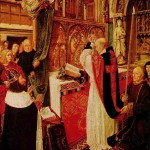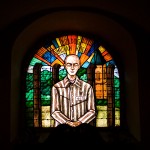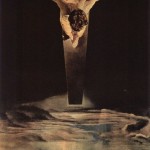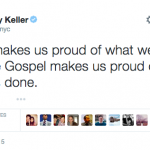As y’all know, I care a lot about the liturgy and why we should care about the liturgy and how we should go about it and how we should think about it.
An obvious first way to think about it is through the lens of yesterday’s post, Morality as Worship. Is “behaving right” is itself a form of worship and the reason why we should do it is that we are called to worship–that our very nature is to worship God–then it clicks into place: obviously the liturgy is the “source and summit of the Christian faith” as Vatican II appropriately says. And this post should be read in the continuity of that.
But one idea that’s struck me and that I want to doodle on here is based on the rediscovery of the Three Transcendentals of ancient philosophy (which has so greatly shaped Christian Tradition): the True, the Good and the Beautiful. To destructively compress Plato and the Neoplatonists, all truth points to the transcendent Truth; all good points to the transcendent Good; all beauty points to the transcendent Beauty; and in turn, the transcendent True, Good and Beautiful is the One, the source of all being, which classical theism identifies as God, and is in turn identified with the God of the Bible by orthodox Christianity.
A rediscovery of this ancient knowledge is important, and particularly its aspect of the Beautiful. Contrary to simple fretting about “relativism”, the postmodern world likes Truth and Goodness just fine. It has Truth–“Science” (not science, “Science”). It has Good–it has a demanding and absolute moral doctrine. But the Modern world does not really like Beauty as a transcendental. The idea that there is an objective standard of beauty is taboo. And beauty, when it is seen as valuable, is seen valuable mainly as a source of pleasure, or, perhaps, as a window into the True and the Good; but not as a ladder to an objective transcendent Beauty (even less of this Beauty understood as the One who created all).
All of which brings us back to the Liturgy. What is the Liturgy? In a word, the Real Presence of God among His People. Who is God? The True; the Good; the Beautiful.
In the Mass, we encounter the True and the Good through the Liturgy of the Word and the teaching of the Church. But do we encounter the Beautiful? Do we see whatever beauty there is in the Liturgy as instrumental? As a source of pleasure, as a way to evoke nice religious feelings, which helps the teaching go down better, or to enhance our feeling of community? (As good as all these things are.) Or do we see our encounter with beauty in the Liturgy as an encounter with God Himself, just as an encounter with His Word is an encounter with Him? Think of the Psalms–which were written for a liturgical context, which are liturgy–; are they not an icon of this union of the True, the Good and the Beautiful?
If we see the Liturgy as an encounter with God and if we understand this ancient knowledge about God, we understand that beauty is not an ancillary aspect of the liturgy; not a nice-feeling part of it, but an intrinsic part of it. God is the union of the True, the Good and the Beautiful–and so, therefore, must be the Liturgy.
“Ceiling Civitas Dei, Entrance of the Cathedral, Aachen, Germany” by Jebulon – Own work. Licensed under CC0 via Wikimedia Commons.













